 Channel 4 has today launched a new broadband Simulcast service, making their live TV schedule available online for viewing, for free.
Channel 4 has today launched a new broadband Simulcast service, making their live TV schedule available online for viewing, for free.
To access the content users will need to register at www.channel4.com/livetv.
Once registered, PC users will be able to sit back and watch a streamed version of Channel 4’s TV schedule, broadcast at the same time as their live TV transmission.
Broadband users – and no doubt, bored office workers sneaking a peek – will be able to sneakily indulge themselves with a feast of Channel 4’s original content, although films and acquired shows (such as the hugely popular Lost or Desperate Housewives), are off the menu for now.
 Channel 4 has, however, said that it is negotiating with US studios to add their content at a later date.
Channel 4 has, however, said that it is negotiating with US studios to add their content at a later date.
The programming will carry the same commercials as the regular Channel 4 TV service, and where the current programming is not available, a rather less-than-enticing sounding “loop of Channel 4 promotions” will be broadcast.
The streamed Channel 4 programmes will also be accessible via the channel’s Website for up to seven days after transmission.
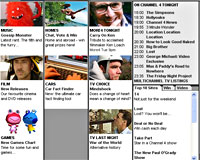 Appearing in a thundercloud of enthusiasm, Channel 4 CEO Andy Duncan was on-beam and on-message and rapidly hit evangelical overdrive, describing the Web transmission as an opportunity “to build on what Channel 4 has always done – stimulate, infuriate, debate, create,” adding that he didn’t see the digital revolution as an attack on Channel 4’s power as a public broadcaster, but as a “fantastic opportunity,”
Appearing in a thundercloud of enthusiasm, Channel 4 CEO Andy Duncan was on-beam and on-message and rapidly hit evangelical overdrive, describing the Web transmission as an opportunity “to build on what Channel 4 has always done – stimulate, infuriate, debate, create,” adding that he didn’t see the digital revolution as an attack on Channel 4’s power as a public broadcaster, but as a “fantastic opportunity,”
After taking a breather, he continued, “It is our stated aim to make Channel 4’s public service programming available across all meaningful platforms and to be the first UK broadcaster to begin simulcasting our content on broadband is a significant step towards delivering on this objective.”
Channel Four’s decision to slap their live TV content up on the Web is indeed a significant development, and proof of how new media is redefining distribution channels.
Despite this, many of the most popular consumer electronics devices remain rooted around a traditional TV, with Freeview boxes and widescreen LCD and HD sets enjoying huge sales.
 We wouldn’t normally bore you with tales of how many more percent of the UK population have joined the Digital TV-owning army, but this one is a significant one.
We wouldn’t normally bore you with tales of how many more percent of the UK population have joined the Digital TV-owning army, but this one is a significant one. TV over ADSL First
TV over ADSL First Additional TV Sets – Ongoing problems
Additional TV Sets – Ongoing problems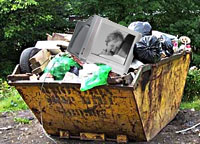 In a few years time, kids will be clutching their sides and laughing at the thought that their parents used to watch TV on massive great boxes that filled up half the living room.
In a few years time, kids will be clutching their sides and laughing at the thought that their parents used to watch TV on massive great boxes that filled up half the living room. Style over picture
Style over picture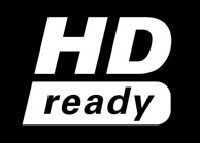 The BBC is making its first steps into the super-crisp world of high definition television (HDTV) with transmissions of Planet Earth and Bleak House in the new format at the end of this month.
The BBC is making its first steps into the super-crisp world of high definition television (HDTV) with transmissions of Planet Earth and Bleak House in the new format at the end of this month.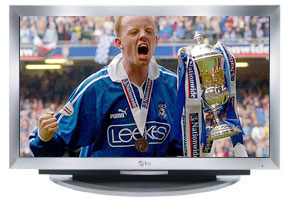 HD TV broadcasts can also beef up the whole big match experience by incorporating 5.1 surround sound and displaying the (Rooney-less) stadium action in widescreen.
HD TV broadcasts can also beef up the whole big match experience by incorporating 5.1 surround sound and displaying the (Rooney-less) stadium action in widescreen.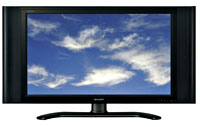 “We really feel that high definition will be the standard definition of the future,” she added.
“We really feel that high definition will be the standard definition of the future,” she added.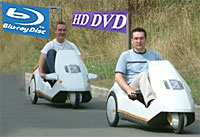 Toshiba has today released the first HD-DVD player.
Toshiba has today released the first HD-DVD player.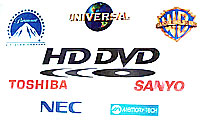 Where the Toshiba-lead HD-DVD will win with the public is in the simple extension of the DVD name, incorporating HD which everyone either does know about, or will do after the advertising frenzy around this years World Cup.
Where the Toshiba-lead HD-DVD will win with the public is in the simple extension of the DVD name, incorporating HD which everyone either does know about, or will do after the advertising frenzy around this years World Cup. You’ll probably remember that we broke the story back in September about the
You’ll probably remember that we broke the story back in September about the  BT’s also confirming that the box that will do all of these things is to be call the BT Hub. Its will use a software platform powered by Microsoft and that the set-top box is to be made by Philips.
BT’s also confirming that the box that will do all of these things is to be call the BT Hub. Its will use a software platform powered by Microsoft and that the set-top box is to be made by Philips.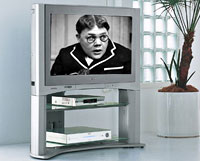 It looks like the days of chunky, clunky cathode ray tube TVs are numbered as worldwide revenues from slimline LCD (liquid crystal displays) TVs surpassed those of cathode-ray (CRT) televisions in the fourth quarter last year.
It looks like the days of chunky, clunky cathode ray tube TVs are numbered as worldwide revenues from slimline LCD (liquid crystal displays) TVs surpassed those of cathode-ray (CRT) televisions in the fourth quarter last year.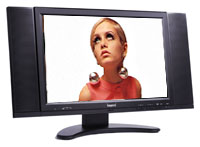 Sales were healthy for plasma-screen televisions, growing 31.3 percent to reach $5.29 billion in the same quarter, giving them the third-largest share of the market after LCD TVs and cathode-ray TVs.
Sales were healthy for plasma-screen televisions, growing 31.3 percent to reach $5.29 billion in the same quarter, giving them the third-largest share of the market after LCD TVs and cathode-ray TVs.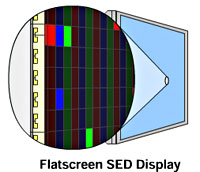 Look out LCDs – here comes SED displays
Look out LCDs – here comes SED displays If you thought the switchover to digital television was going to be a challenge, spare a thought for the regulators, policy makers and engineers who are already tasked with trying to figure out the best way of re-allocating the spectrum freed up by switching off the analogue broadcasting signal.
If you thought the switchover to digital television was going to be a challenge, spare a thought for the regulators, policy makers and engineers who are already tasked with trying to figure out the best way of re-allocating the spectrum freed up by switching off the analogue broadcasting signal. The first two sessions focused mainly on the problems associated with harmonisation. It is essential that adjoining states will have to work together to allocate spectrum, if there are not to be interference issues. The ITU’s
The first two sessions focused mainly on the problems associated with harmonisation. It is essential that adjoining states will have to work together to allocate spectrum, if there are not to be interference issues. The ITU’s  Of course regulatory uncertainty is same for all those looking to unlock the digital dividend (although some argue that the broadcasters are well positioned because they already sit on the spectrum). Whatever happens its going to be a complex and highly political interplay between policy makers, regulators and transnational organisations such as the ITU.
Of course regulatory uncertainty is same for all those looking to unlock the digital dividend (although some argue that the broadcasters are well positioned because they already sit on the spectrum). Whatever happens its going to be a complex and highly political interplay between policy makers, regulators and transnational organisations such as the ITU. For the second time in a fortnight, coastguards have been scrambled after a digital TV box sent out a signal on a wavelength used by ships in distress.
For the second time in a fortnight, coastguards have been scrambled after a digital TV box sent out a signal on a wavelength used by ships in distress.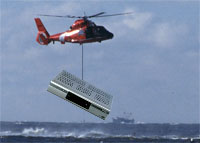 An Ofcom spokesman explained that the faulty boxes are now being examined for malfunctioning components, adding: “Apparently any device capable of receiving a signal can also send a signal if it malfunctions. To the best of our knowledge these are the only two out of millions of Freeview users in the UK to have experienced this problem.”
An Ofcom spokesman explained that the faulty boxes are now being examined for malfunctioning components, adding: “Apparently any device capable of receiving a signal can also send a signal if it malfunctions. To the best of our knowledge these are the only two out of millions of Freeview users in the UK to have experienced this problem.”